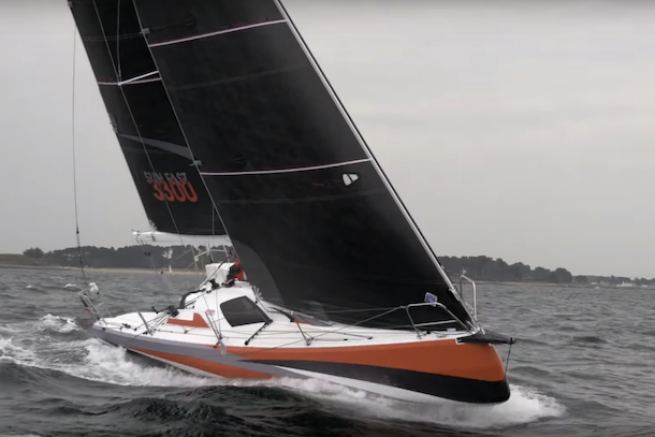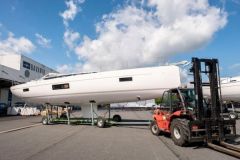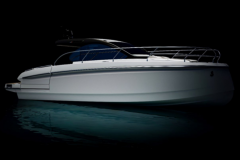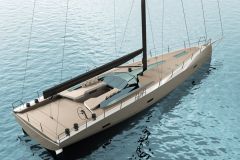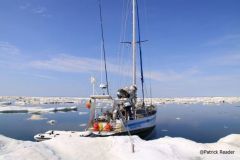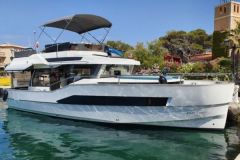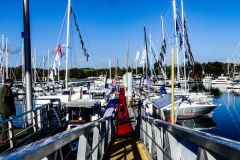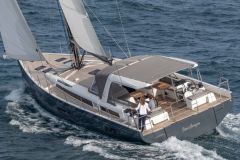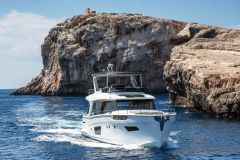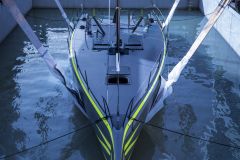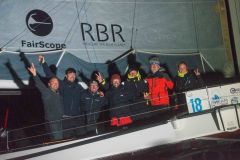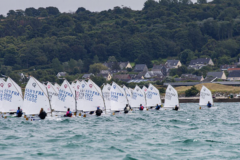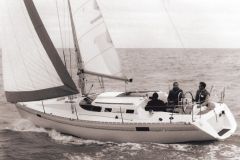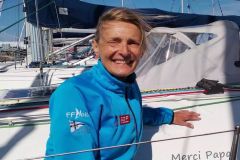A successful collaboration
Daniel Andrieu is the historical architect of the Sun Fast range at Jeanneau shipyard. The previous model of this series of performance offshore cruisers was launched in 2007. A keen connoisseur of the IRC gauge, he is also aware of the owners' desires. Indeed, this passionate and enthusiastic sailor collects brilliant results.
This partnership, which has been ongoing for several decades, has enabled the Vendée-based manufacturer to be regularly on the highest steps of the podiums.
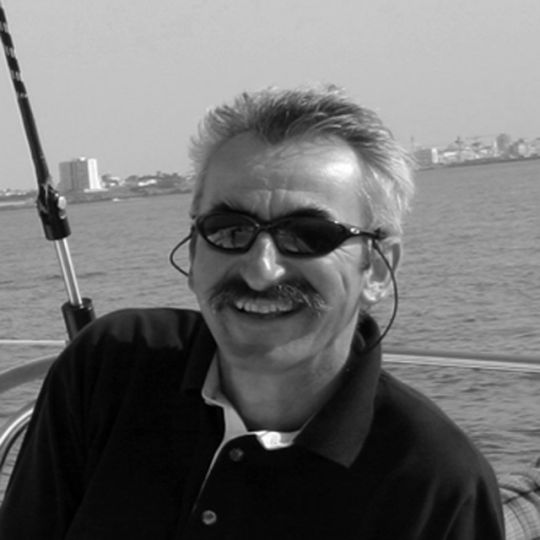
An evolving demand
As the demand from boaters is for more sailing with a reduced crew, Jeanneau has decided to launch a new racing yacht. This is how the Sun Fast 3300 was created in 2019, incorporating the latest technological developments.
It is still under the leadership of Daniel Andrieu that Jeanneau hopes to win in the IRC races. For this new generation of Sun Fast, the architect collaborated with a colleague, Guillaume Verdier, one of the leading specialists in offshore racing yachts.
The result of this synergy is amazing. The Sun Fast 3300 has a strong personality and sharp features. It's a very modern boat.
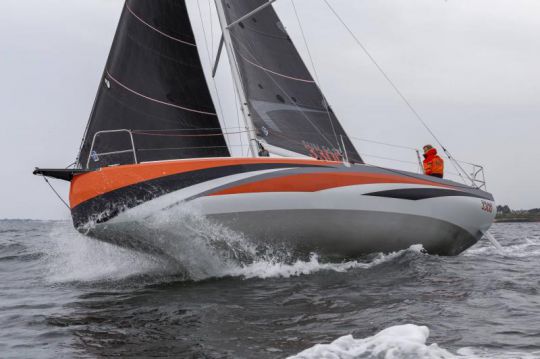
What does the new Sun Fast 3330 offer compared to 3200??
The Sun Fast 3300 replaces the 3200, released in 2007. This boat has had many successes in coastal regattas and technical courses. If it is very well represented on the Transquadra, it has especially shone on inshore races.
The 3330 uses the same concept while providing technological progress. It may be a little more oriented towards the open sea with a reduced crew, in response to changing demand.
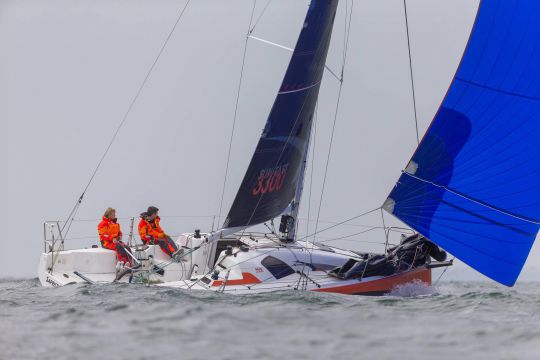
What was the specifications of this bateau??
We wanted above all to make a fun sailboat, but one that would meet the requirements of the IRC gauge.
Believe me, it's not easy at réaliser?! (laughs)
We wanted a fun boat, competitive in IRC inshore and offshore regattas. A versatile sailboat for sailing with a reduced or full crew.
When you can meet all these criteria, you are content?! This is how the Sun Fast 3300 was born, and you must also make sure you don't take a beating in other gauge systems.
Are there any significant differences between the jauges??
Not fundamental. It is especially in the measurement methods that they differ. For example, Americans run in PHRF. They can be more canvassed without being overtaxed.
They do not have the IRC constraints that give boats fairly average characteristics.
The Sun Fast is not specialized for banana courses. What are the consequences of this? architecturales?
We examined some bold options that might seem counter-intuitive. For example, the hull shape we generated has a very swollen front. We accepted "a priori" that by force 2, an SF 3200 or another more conventional boat would be more comfortable.
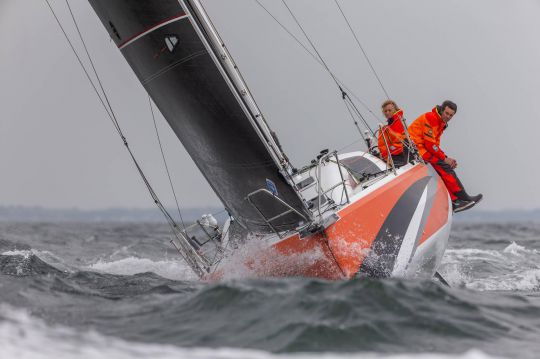
So the Sun Fast 3300 "does less up close" than the 3200??
And non?! In fact, this is where we see the difference between theory and practice. We discovered that the SF3300 also works very well in light airs.
One of our riders, Bernard Mallaret, who sails in the Mediterranean on one of the first boats in the series, was surprised to be able to compete in 10/14 knots of wind with Mum 36, Grand Soleil 37, or A 35.
Bernard is certainly a very good helmsman, but he is the first to be surprised at the boat's abilities in light airs.
How can we explain that these very large bows do not slow down the voilier??
The drag of a hull is essential. Many factors are compiled or cancelled out depending on the case. For example, we know that in theory, a sailboat with a wide bow will have a keel that works better in the axis of the hull and will offer more power. But we thought that these volumes before were totally unacceptable in the chop.
In practice, of course, there are times when the chop will really slow the boat down. But these moments are more marginal than we feared, while we often enjoy the benefits of these hulls.
The design of the sailboat evokes high speeds downwind. Can you tell us about the planning capabilities of the Sun Fast 3300??
To glide well, you have to be powerful and light and this is not favourable to IRC. To avoid being completely bludgeoned in IRC, the 3300 remains a displacement boat. But we are relatively light (3600 kg) compared to the "true length".
By way of comparison, the Sun Fast 3300 is the same weight as the 3200 with one foot more. The wet surface is equivalent, but the shape stability is greater than 3200.
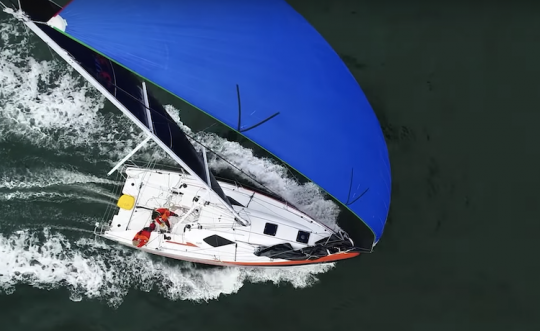
We can't see it in the harbour, but the hull has unusual sections, with a double concavity at the front and at the back, can you tell us expliquer??
Indeed, we have generated a hull with inverted curves, these concave on the keel line allow the dynamic pressure to be distributed as evenly as possible and limit the drag for more performance.
Thus the hull offers less resistance at high speed: you surf earlier, longer and further. And it's incroyable?! We often hold 14, 15, even 16 knots, when I've never done that on my 3600? !
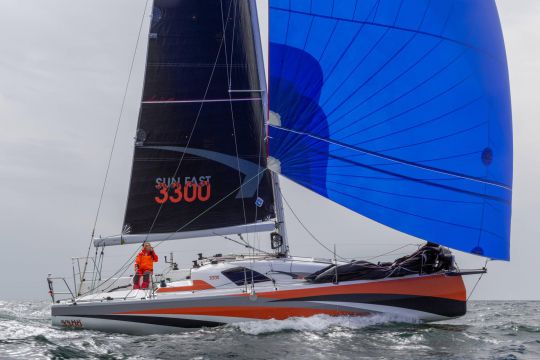
The roof has an innovative design, can you tell us more about it in the charges? booklet?
First, there is the height under the beam necessary for life on board. We wanted a height of at least 1.80 m, I still do 1.92 m?!
There is also the position of the mast which is extremely far back. He's a foot further back than any of the others. What gives the sail plan a very large front triangle is the "engine" of the sailboat, and we wanted to be able to observe it from the inside. This is a performance criterion for off-shore riders.
We also wanted to integrate the 3-dimensional genoa adjustment system equipping the Figaro3. It can be retracted at an angle of 9° to the longitudinal axis of the boat.
Finally, we wanted a roof design that was pleasing to the eye compared to the competition.

And finally, you who have been designing racing yachts for 40 years, what do you think about the arrival of foilers in the world at course??
Well, there will soon be no need for architecte?! A bucket with foils will do (laughs) ?!! The AC75s will fly almost permanently, as the organizers limit the regattas to certain wind strengths.
Foils are a very exciting trend, but perhaps too specialized compared to the average boater. A few years ago, even the America's Cup Classes were not that far from our boats. We could project ourselves there, the technologies developed could be transferred. But now with flying boats, I'm afraid we're too disconnected to keep it a dream within the dreamer's mental reach.
And then I'm afraid it won't generate new users, while there are fewer and fewer people to navigate. But the story is moving on, and when you've seen pictures of flying boats, then when you see a sailboat sailing at 9kt it's not very exciting anymore.
